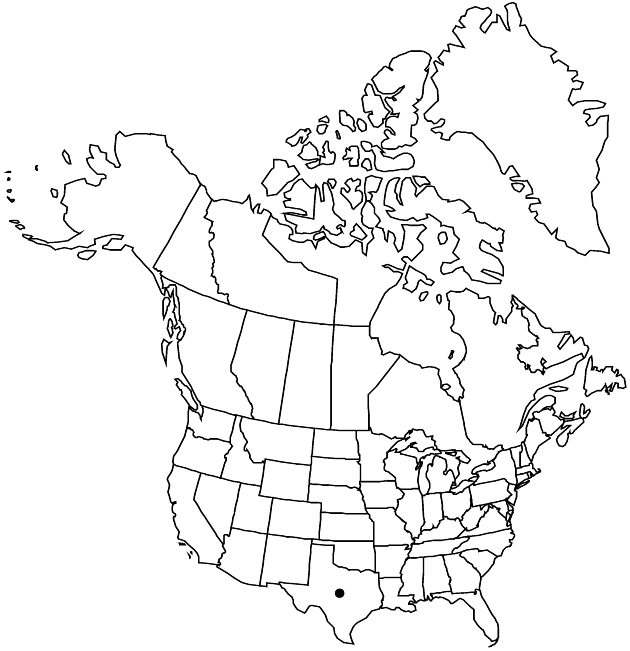Symphyotrichum eulae
Phytologia 77: 281. 1995.
Perennials, 5–150 cm, colonial; long-rhizomatous (rhizomes thick). Stems 1–3+, erect (straight, stout), glabrous. Leaves firm, margins serrulate to serrate, distally entire, ± revolute, scabrous, apices mucronate, abaxial faces glabrous or glabrate, adaxial scabrous, cauline often with axillary tufts of leaves; basal withering by flowering, petiolate (petioles slightly winged, ciliate, sheathing), blades ovate or elliptic to elliptic-lanceolate, 15–120 × 15–35 mm, bases gradually to ± abruptly attenuate, margins crenate-serrate, apices obtuse to acute; proximal cauline withering by flowering, petiolate to subpetiolate (clasping), blades elliptic to lanceolate, 85–100 × 18–30 mm, bases cuneate to slightly attenuate, apices acute to acuminate; distal sessile, blades elliptic or elliptic-lanceolate to lanceolate, or lance-oblong to linear-lanceolate (arrays), 8–90 × 1–25 mm, progressively reduced distally, abruptly so in arrays, bases cuneate, margins entire, apices acute to acuminate. Heads in leafy, open, paniculiform arrays, branches ascending to divaricate, nearly horizontal, elongate (to 38 cm), secund-racemiform. Peduncles 0.4–3 cm, secund, glabrous, bracts 5–10, not crowded, linear to linear-lanceolate, spreading, foliaceous, grading into phyllaries. Involucres hemispheric, (4–)5–6.5 mm. Phyllaries in 5–6 series, lanceolate to oblong-lanceolate (some inner linear), unequal, bases indurate 1/3–2/3, margins scarious, erose, hyaline, sparsely ciliolate, green zones lanceolate, prominent, apices acute (acuminate), slightly spreading, faces glabrous. Ray florets (20–)27–36; corollas usually white to bluish or lavender-white, rarely pale lavender or lavender-pink, laminae 8–11 × 1–1.5 mm. Disc florets 25–31; corollas yellow turning reddish then brown, (4.1–)4.5–5.8 mm, tubes shorter than funnelform throats, lobes recurved to erect, lanceolate, 1.1–1.3 mm. Cypselae tan to reddish brown, obovoid to fusiform-obovoid, ± compressed, 1.4–2.9 mm, 4–5-nerved, faces strigillose; pappi white (sordid), 4.5–5.8 mm. 2n = 48.
Phenology: Flowering Oct.
Habitat: Usually partly shaded, heavy-clayey, clayey-loamy, or silty soils, banks, open stream-bottom woods, ditches, drainage systems, disturbed areas, hedgerows
Elevation: 0–100 m
Discussion
Symphyotrichum eulae is known only from Texas. It has been reported as a hybrid of S. lanceolatum and S. praealtum. It is not a hybrid, according to Shinners, and we are not considering it as such here.
Selected References
None.
